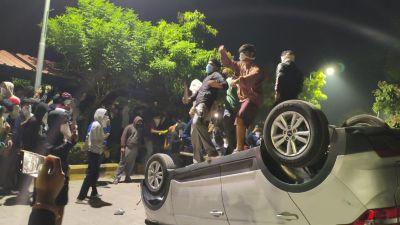What’s not to like in the magnificent views of the Himalayas, the crystal air, the vivid birds and blooms
The mountains will always be a draw, though these days with wide smooth roads running up and tunnels boring through them, getting up there is no longer an adventure
 The Asian Paradise Flycatcher (Source: Wikimedia Commons)
The Asian Paradise Flycatcher (Source: Wikimedia Commons)I have always wondered if given the choice between living in the mountains and living by the sea, which would I choose? I have, of course, spent time (not enough) in both locations and both are powerful magnetic draws. Trips to the mountains (the Nilgiris) began back in the 1960s, to what was then Ooty, still hugely colonial, especially in the guesthouse where we stayed what with its liveried butler, roaring bonfires and garden adorned by a Christmas tree. We knew we were approaching the foothills when the air became cool and scented with eucalyptus and a while later, when the loaded Ambassador begged for water on the steep hairpin bends. There were the botanical gardens and the lake where boating was de rigeur as were pony rides.
From Bombay, where we next lived, we drove off to Mahabaleshwar regularly for the holidays. At the time, in the 1970s Mahabaleshwar had a lovely rambunctious air about it and I used to watch out for the tunnel webs of the huge hairy spiders at the bottom of the slopes. During our earliest visits, there was not even electricity in our guesthouse. The bathrooms were lined with shiny thunderboxes which some poor soul had to keep shiny every morning. Lighting was with large hissing petromax lanterns, though the views we got of the valleys and surrounding hills more than made up for any discomfort.
Collecting the house keys from the agent at the bazaar we would drive down the long katcha tree-shrouded road to the guesthouse which seemed hugely adventurous when done in the dead of night. We’d rattle up and down this road on our cycles during the day and of course there were walks and visits to the various ‘Points’(Wilson Point, Bombay Point) and, of course, ‘Arthur’s Seat’, with its spectacular view. There were boat rides and walks around the lake and baby carrots and roasted bhuttas thereafter. And, of course, daily evening trips to the bustling bazaar, a-glitter with activity.
When we shifted up north and settled in diabolical Delhi, perhaps our first escape was to Kasauli, that author’s retreat, what with its neat church and towering chir pines. Here, I got my first lesson in hill etiquette: When I snapped (Delhi style) at a shopkeeper to not dawdle with my order the poor old man looked as if he had been socked, ‘What is the hurry?’ he asked softly. While authors (like the late Khushwant Singh) have worked here, I frankly think I’d be too distracted by what’s going on outside the window to get any work done.
We stayed 10 days at a small tea garden in Palampur (Himachal) owned by relatives, where I spent most of my time chasing paradise flycatchers in the garden who would whistle me out of the house and then give me the royal runaround from one end of the sloping garden to the other through knee-deep wet grass.
The paradise flycatchers in Naukuchiatal were far more down-to earth. The resort management would dump their garbage down the mountainside, and, well, garbage attracts flies and flies attract
flycatchers and birders who want to photograph them. I had a glorious male in full breeding regalia, swoop down at my feet to pick up a juicy bluebottle I had missed. While Naukuchiatal had a distinct synthetic ‘resort’ feel to it (not quite what one wants up in the mountains) there were still hairy spiders lurking in the bathrooms. One evening, a ballet of fireflies performed for us, wafting through the pine trees as a thunder-and-lightning storm produced a background score.
Sonapani, in Uttarakhand, was another complete delight. A retreat owned by a couple, who wanted to keep it that way – you had to at that time, walk 30 minutes to get to the place from where the road ended. (Vehicles bump right up to the place now). Full of flowers, good food and 10 cottages on the mountainside it was the perfect place for spending time alone, as well as socialising with like-minded folks. There were walks and treks through the pine forests (the tapped trees smelt of raw turpentine and the sap was hellish sticky as some poor insects found out).
On my first visit there, a magnificent peregrine falcon perched haughtily on a pine tree, overlooking an entire valley that was obviously his kingdom. And there was delight in discovering a small whitewashed school perched on a ridge, with its students busily dusting and sweeping before the teacher ma’am arrived! Alas, my solitary trips to Sonapani ended one night when I suddenly awoke and sat bolt upright, gasping. The height (6,000-7,000 feet) plus the day’s excess exertion were claiming their ransom.
The mountains will always be a draw, though these days with wide smooth roads running up and tunnels boring through them (such an insult) getting up there is no longer an adventure. The resorts are just disgraceful. And there’s always the sickening sight of scarred, brutalised mountainsides, where ‘development’ has caused total havoc. The mountain people resent people from the plains (with good reason) and if you wish to settle even in a place which is tucked away and hidden, you will have to win your spurs with the local people over a period of, maybe, years. But yes, it will be worth it – for the views of the magnificent Himalayas (and several sacred peaks), the crystal air, the vivid birds and blooms, the frill-leafed ferns overhanging excited jade green streams, your child’s tomato cheeks and the occasional pine marten eyeing you accusingly as it scuttles away.
Townie!



- 01
- 02
- 03
- 04
- 05



























